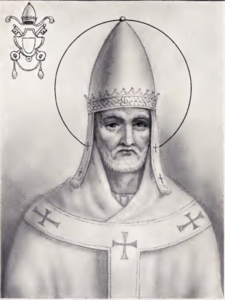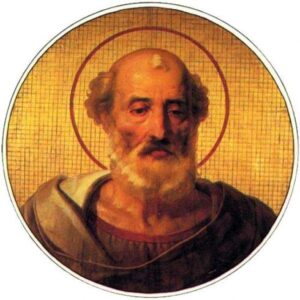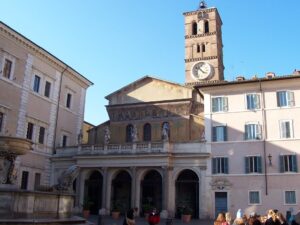Pope, Mar Julios (Yulios) Patriarch of Rome – April 12

Mar Julius (Yulios), the bishop of Rome, son of Rustics, was born in Rome or was a native of Rome. Further details of his parents or childhood is not available. Rome was and remains the historic centre of the Western Patriarchate and remains a holy place of Orthodox pilgrimage after that Patriarchate ceased to confess Orthodoxy. The word ‘pope’ in Greek, means ‘father’. The official title of the Patriarch of Alexandria in the Orthodox Church, also remains ‘Pope of Alexandria’.
The Church in Rome was founded by St. Paul. St. Peter was never a pope of Rome. This is the early tradition of the Church of Rome itself and therefore remains the tradition of the rest of the Orthodox Church today. St. Peter founded not the Church of Rome, but the Church of Antioch, which is very clear and evident in the Acts of the Apostles and the Epistle of St. Paul to the Romans.
Mar Julius, was chosen as successor of Pope Mark after the Roman see had been vacant for four months and consecrated bishop on 6 February A.D. 337 after the demise of the Roman Patriarch, St. Mark. He is chiefly known by the part he took in the Arian controversy and his pontificate chiefly celebrated for his judicious and firm intervention in the Arian controversies.

There was confusions and chaos in the Church after the Nicaea Synod. The associates of Arius who refused to accept Christ as God incarnate and the other side which went by the decisions of the Nicaea Synod tried their best to impress upon Emperor Constantine that they are right. Arius defamed St. Athanasios of Alexandria died due to brain hemorrhage in A.D. 336. In A.D. 337, Emperor Constantine also died, his three sons Constantine II, Constantius, and Constans divided the empire and became rulers in their respective regions. The eldest son Constantine II brought back and enthroned, the deposed Athanasius. Then Eusebius of the Arius faction in Nicomedia raised an issue over the enthronement without convening a synod. He levelled several accusations against Athanasius, to Mar Julius. The bishops of Egypt sent delegates to Rome supporting Athanasius. It is said that Pope Julius declared December 25 as the official date of the birth of Jesus, in AD 340
In August A.D. 341 a Dedication Council gathered in Antioch on the interest of Eusebius and the council confirmed the decisions of the Trier council against Athanasios. Mar Yulios countered it by calling a Synod in November A.D. 341 of more than fifty metropolitans and dismissed all allegations against Athanasius and announced the decision to accept him. He is known in history as the protector of Athanasius. Mar Yulios offered him sanctuary and St. Athanasius, remained in Rome several years, which helped to introduce the Egyptian monastic life in the city of Rome. The example of the hermits of the Egyptian deserts is even found many imitators in the Roman Church.
Mar Julius was the Patriarch of Rome from A.D. 337 to A.D. 352. This Holy Father constructed two churches in Rome, one in the name of the twelve apostles and one in the name of Blessed Virgin St. Mary. Beside these he built three Churches over cemeteries outside the walls of Rome. This led to the veneration of the faithful for the tombs of the martyrs, which continued to spread rapidly. The epistles he wrote to the Church of Antioch and the Church of Alexandria are still prevalent and even regularized a Liturgy of Holy Qurbana, in which the prayer anticipating the second coming of Christ is remarkable.

He departed for the heavenly abode on 12 April A.D. 352 and was succeeded by Liberius. He was buried in the catacombs of Calepodius on the Aurelian way. Sometime later, his body was moved to St Mary’s Basilica, the Church which he had built earlier.
Reference: Martyrs, Saints & Prelates of The Syriac Orthodox Church; Cor-Episcopo K. Mani Rajan

0 Comments